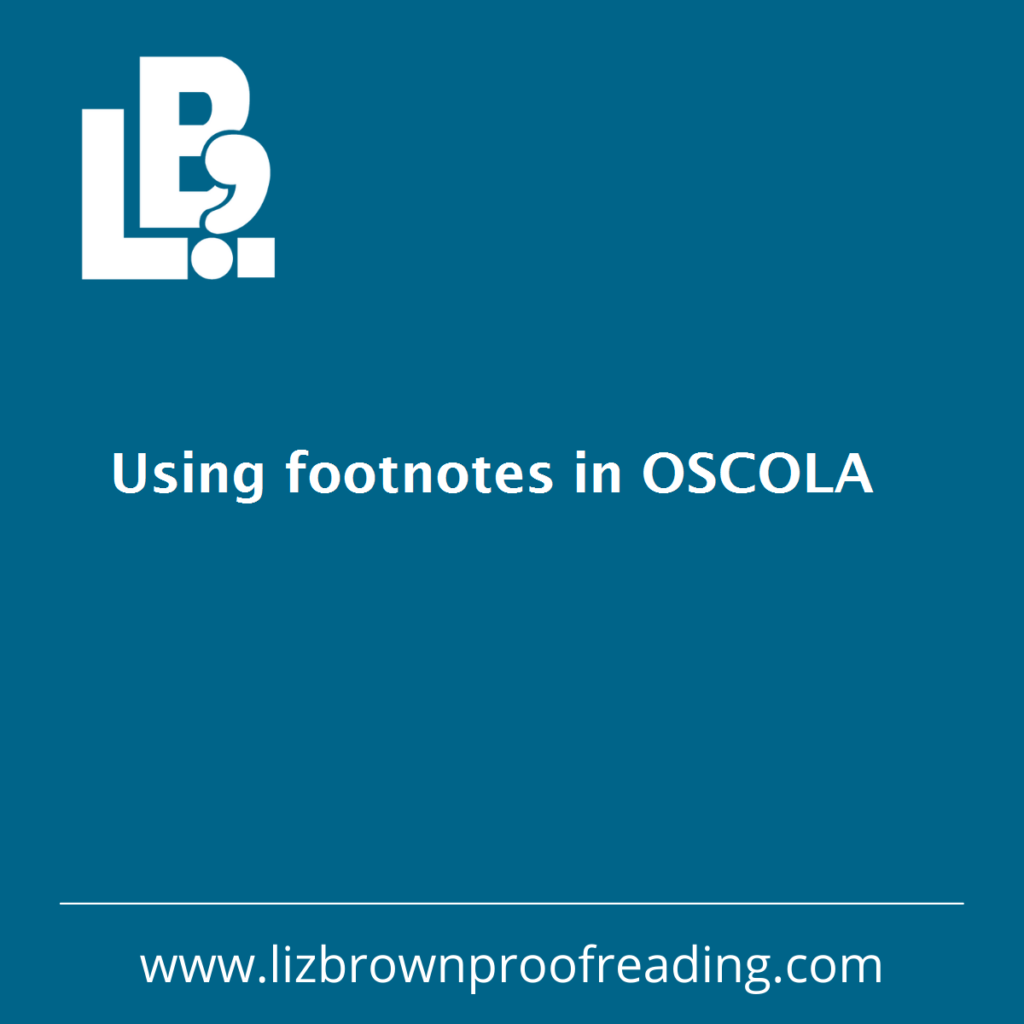Footnotes are one of the primary features of OSCOLA, which is a footnote-based style. All citations of legal cases, statutes, books, journal articles, websites, anything that you have referred to in your research, appear in footnotes at the bottom of the page. So, in this article we’ll take a look at how to insert footnotes into your document, how to style them in OSCOLA and some shortcuts that will save you time, and look neat.
Placing superscript markers
In the running text – the main writing of your dissertation – each footnote is indicated with a numbered superscript marker in the text. It’s really easy to do. Just use the Word Footnotes option on the References tab to enter each footnote in the correct place. Another important thing to decide, right at the outset, is whether you will start the footnotes afresh at the beginning of each chapter, or whether you will continue the numbering throughout the document if it contains several chapters. Your university may have rules about this, so always check or it may depend on the length of your dissertation. The easiest is to keep the numbering going throughout the work, that way you’ll only need a full citation once. Any subsequent citations of the same material can be in a short format. If you decide to restart every chapter afresh, then you will need to cite each entry in full the first time you use it, rather than use shortcuts.
Formatting your footnotes
So assuming you’ve placed your marker in the correct place, now let’s worry about what goes on at the bottom of the page. The wording of each footnote has to be styled according to the type of material. There are layouts for cases and statutes (called primary sources), and other legal documents, books, journal articles, and other more unusual materials (called secondary sources). Remember that you need to check the correct layout of each one. It’s not that difficult and once you get the hang of it, you’ll soon remember them. We’ll take a look at the most common over the course of the next few articles.
In terms of styling the footnote itself, the number is usually in superscript; the wording in normal font, but one or two sizes smaller than the font size of your normal text. Say you are using Times New Roman 12 pt (TNR) for your main text, then use TNR 10 pt for the footnotes. Some people prefer to use a different font for the footnotes, but personally I think a dissertation or thesis looks neater if the same font is used throughout, unless you are formatting with Styles or your institution has style rules to follow.
Using Latin abbreviations
Close each footnote with a full stop. If there is more than one citation in a single footnote separate them with a semi-colon. Also, avoid what OSCOLA calls ‘Latin gadgets’, except ‘ibid’ which can be used to repeat a citation in the immediately preceding footnote. Remember this refers to the footnote immediately before – not another footnote on the same page or one in a different chapter. The word ibid is not in italics and always has a small case ‘i’ – Word does not like this, and may try to overrule you! Some people like to use the Latin gadget op cit. to refer to a footnote in a different place, which means ‘previously cited’. However, the OSCOLA guide advises against these and other shortcuts such as supra, so I try to avoid these if possible. However, some footnote short cuts are available.
Save time (and word count) with shortcuts
You don’t need to cite the full reference every time it is repeated, there are various shortcuts that can be used. The first time that you cite a reference you need to write it out in full, following the prescribed format. The next time it crops up there are various short forms that you can use, depending on the source material you’re citing.
- Case law: if you are repeating the citation of a legal case, then you can just cite the case name, in italic, no need for the date or the law report information, and the number of the previous footnote. For example: Donoghue v Stevenson (n 55).
- Statutes: repetitions of legislation can be shortened to the Act or regulation’s short title or abbreviation. For example, the Human Rights Act 1998 can become HRA 1998.
- Books and journals: you just need to cite the author’s last name, the number of the footnote containing the full citation and the page number of this reference. For example, Bingham (n 56) 27. If the author has more than one work cited in your dissertation then also cite the title. For example, Bingham, The Rule of Law (n 56) 27.

